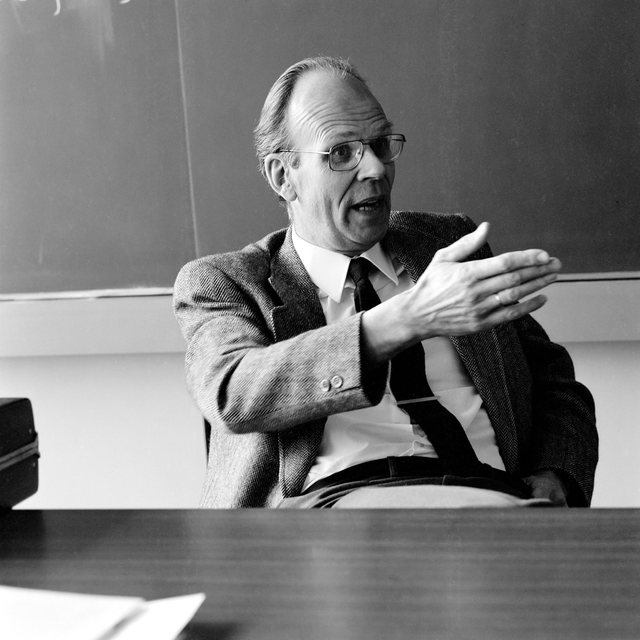Léon Van Hove

Léon Van Hove

Léon Van Hove | |
|---|---|
| Born | Léon Charles Prudent van Hove (1924-02-10)10 February 1924 Brussels, Belgium |
| Died | 2 September 1990(1990-09-02)(aged 66) Geneva, Switzerland |
| Scientific career | |
| Fields | Theoretical physics |
Léon Charles Prudent Van Hove (10 February 1924 – 2 September 1990)[1] was a Belgian physicist and a former Director General of CERN.[2][3] He developed a scientific career spanning mathematics, solid state physics, elementary particle and nuclear physics to cosmology.[4]
Léon Van Hove | |
|---|---|
| Born | Léon Charles Prudent van Hove (1924-02-10)10 February 1924 Brussels, Belgium |
| Died | 2 September 1990(1990-09-02)(aged 66) Geneva, Switzerland |
| Scientific career | |
| Fields | Theoretical physics |
Biography
Van Hove studied mathematics and physics at the Université Libre de Bruxelles (ULB). In 1946 he received his PhD in mathematics at the ULB. From 1949 to 1954 he worked at the Institute for Advanced Study in Princeton, New Jersey by virtue of his meeting with Robert Oppenheimer. Later he worked at the Brookhaven National Laboratory and was a professor and Director of the Theoretical Physics Institute at the University of Utrecht in the Netherlands. In the 1950s he laid the theoretical foundations for the analysis of inelastic neutron scattering in terms of the dynamic structure factor. In 1958, he was awarded the Francqui Prize in Exact Sciences. In 1959, he received an invitation to become the head of the Theory Division at CERN in Geneva.[5] In 1975 Prof. Van Hove was appointed CERN Director-General, with John Adams, responsible for the research activities of the Organization.[6] The LEP project was proposed during Van Hove's tenure as Director General.[7]
Awards
Francqui Prize, 1958
Dannie Heineman Prize for Mathematical Physics, 1962
See also
Van Hove singularity
List of Directors General of CERN
Théophile de Donder
Hilbrand J. Groenewold for the Groenewold–Van Hove theorem